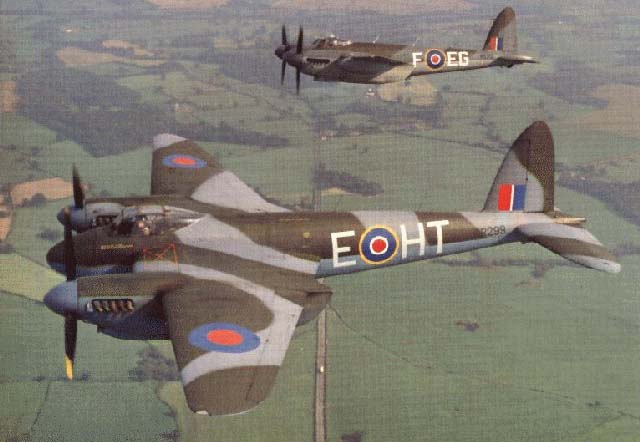|

|
The all-wood Mosquito bomber was designed with war in mind. Powered by two Rolls-Royce Merlin engines, the Mosquito was as fast as a fighter and could carry the payload of a medium bomber. Flying high and fast, it was believed it could perform the mission without defensive armament. In a display of incredible foresight, de Havilland constructed the airplane almost entirely out of balsa and plywood in case strategic metals became scarce. The first prototype flew on November 25, 1940, and the Air Ministry officials who had been so skeptical were amazed to see the Mosquito performing climbing rolls on one engine, and dashing across the sky at speeds expected of fighters. Production of three prototypes for official consideration were built: the Mosquito PR.Mk I, a photo-reconnaissance plane, the Mosquito B.Mk IV, a medium bomber to replace the Blenheim, and the Mosquito NF.Mk II, a night fighter. The Mosquito was much faster than the Blenheim and required new tactics to hit its targets. The bomber crews were soon very impressed with the amount of damage the Mosquito could absorb. Its construction took full advantage of the flexibility of its wooden construction, the two sides being fully equipped with controls and wiring runs before being joined together. The Mosquito was also manufactured under license in Australia and Canada. In all, 7,781 Mosquitoes were built.
|